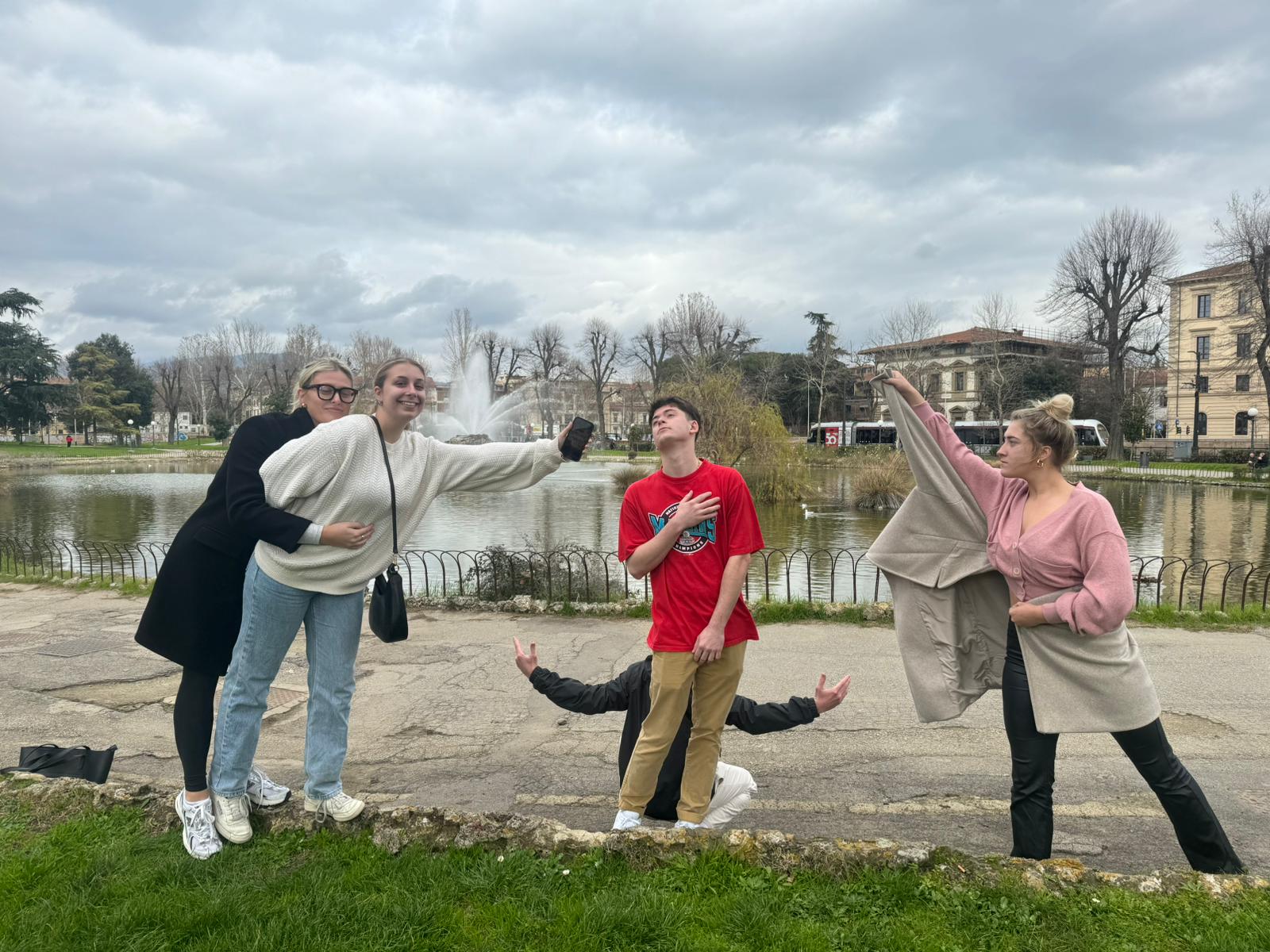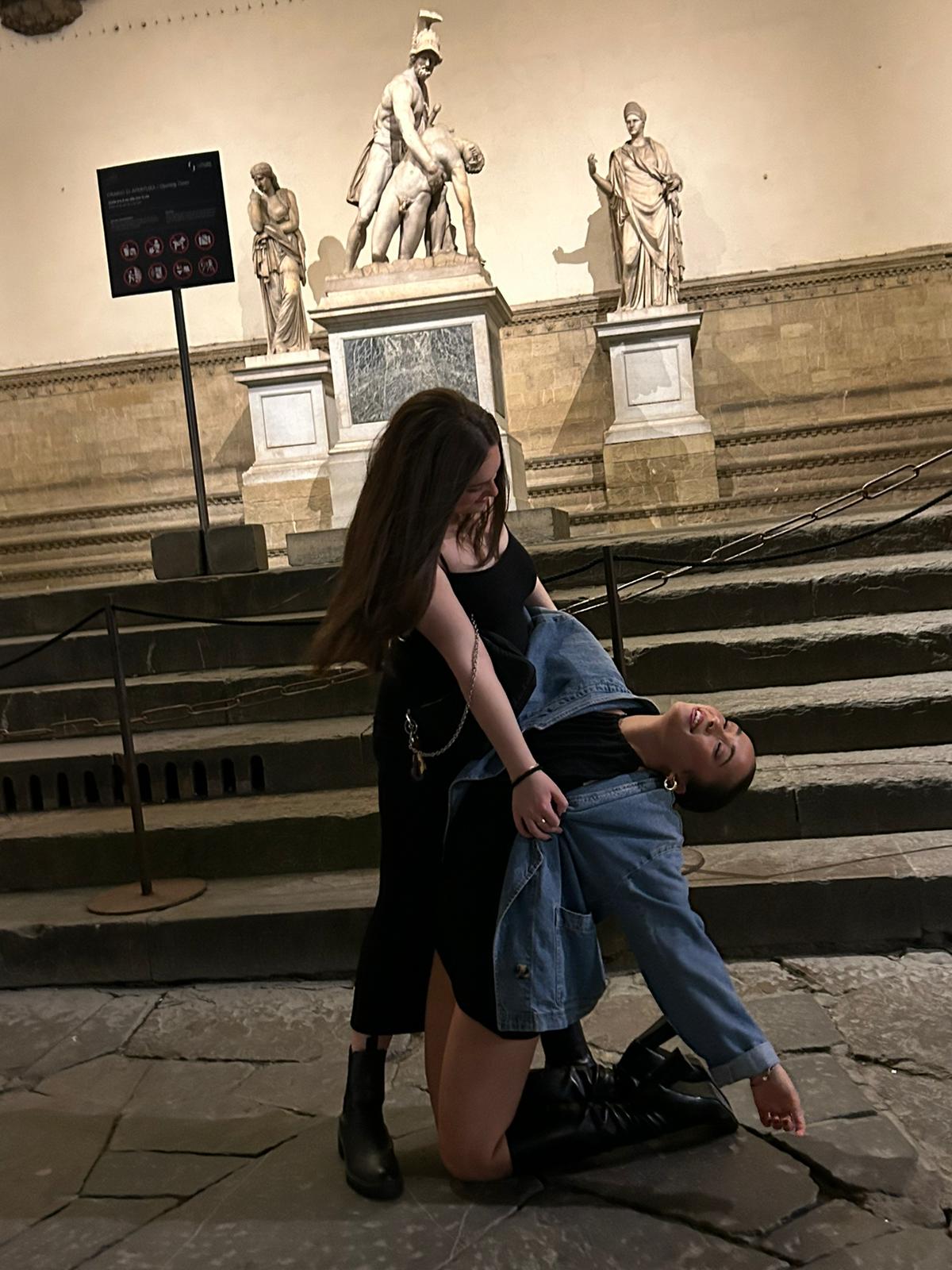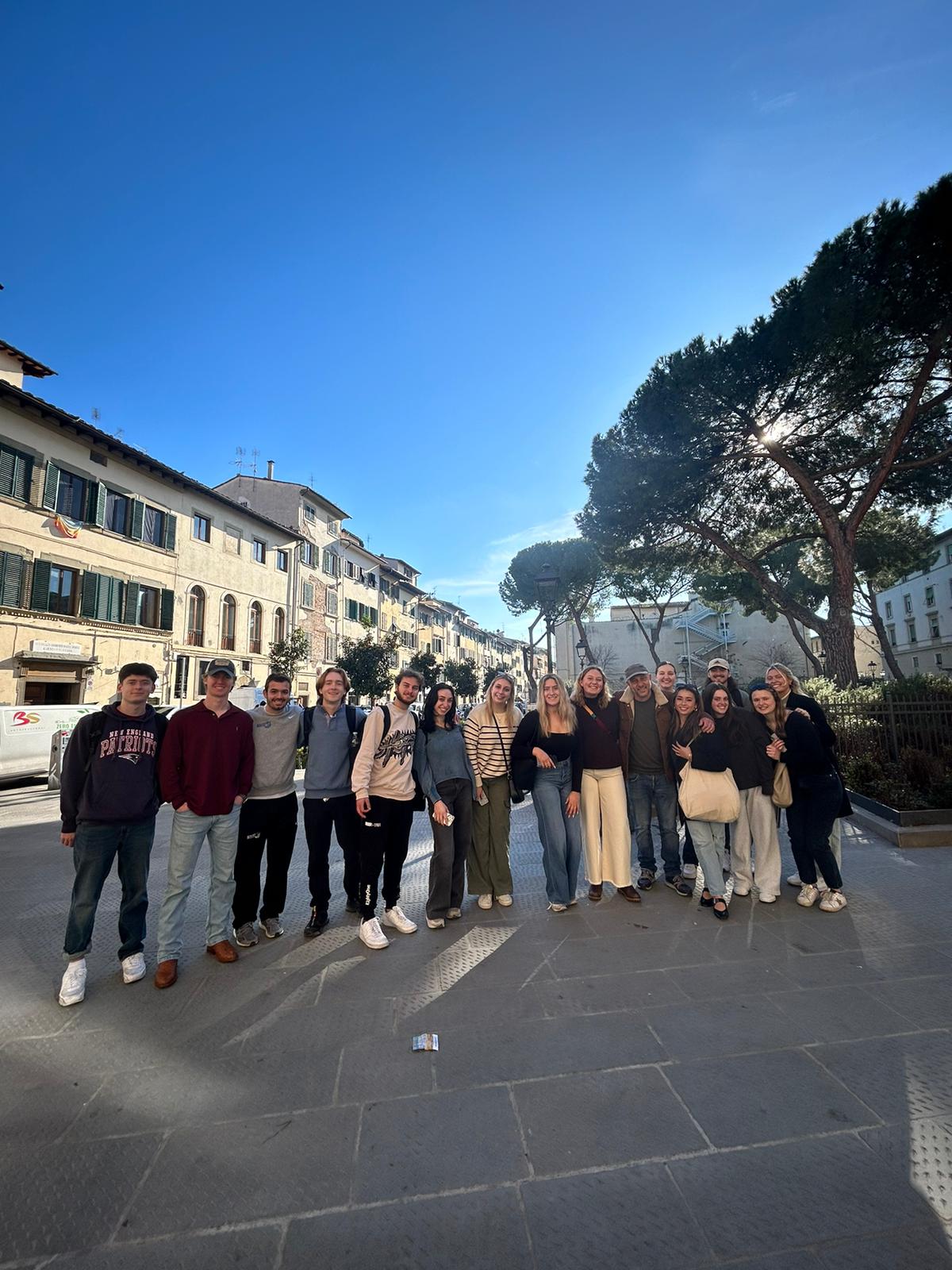This month, Florence University of the Arts – The American University of Florence launches a new internship program for international nursing students, offering the opportunity to take clinical placements at Careggi University Hospital.

Art, Space, and the City: A New Course on How to Experience Florence through Contemporary Art and City Structure
Written by Sophia Koch, Special Project Experiential Learing in Journalism - Spring 2024
Art, psychology, and philosophy have been rounded up in one new course through Florence University of the Arts - The American University of Florence: Art, Space, and the City: Mixed-Media Walks. Students walk and engage in a variety of artistic projects, exercises, and experiments to open up their minds to the world and art around them, connecting them with the urban space. Urban space is the inner core of a city and the highly populated residential and commercial areas adjacent to the city center. Each lesson students will be taught about significant artists and techniques through experiential learning, and stimulating sensorial and artistic skills. Each day the students learn a different style of contemporary art. By the end of the day they will be able to broaden their knowledge and observations of the space around them psychologically, philosophically, and artistically. Prof. Moretti and his students explained the lesson the day before to me. Students broke into groups and Google mapped a strict destination. Then they would record their observations, thoughts, and feelings on the overall walk with a large group. Next, they would break into a smaller group and follow a compass for a period of time and reflect again. The next walk would be with two people and each would pick a street to walk down. The students flipped a coin and chose head or tails, whichever one it landed on would be the street they walked down.

The last walk the students did individually and went wherever they liked, then documented their perception from the walk. One student spoke on how she thinks of this class by “art of noticing.” After the first week the student felt as she has been able to open up more to the people around her. The students mentioned how they find themselves walking towards somewhere that makes them feel calm and they start noticing more of the atmosphere surrounding them. The objective of this lesson was to identify how overlapping walks affects spatial perception, assess how speed interacts with time and space, and record similarities and differences when walking in the same or opposite direction.
Prof. Giamparide Moretti is an artist himself and the professor for the new course, embedded in the Department of Mixed Media. Contemporary art is a complex understanding and Prof. Moretti is teaching students about the concept through present time. Experiences in life are the main source for students to learn because contemporary artists don’t usually work inside a studio. “The body is a tool that we use to learn,” says Moretti. While walking throughout the city during the lessons you get to feel the raw and real emotions of the impact the city has on you. The course aims for the students to become more open minded because that is most valuable when learning contemporary art.
The lesson I attended explained how everyday objects can also be turned into art. The notion behind this principle is called “ready-made.” The object Prof. Moretti used for the lesson was a chair. He wanted students to first take turns sitting in different chairs and observe what they are made out of, which one they like the best, and the different uses for each chair. Then the students walked to the Carriage Gallery of Palazzo Medici Riccardi. In the gallery you can find Claudio Parmiggiani art of water vehicles transported to land. Four canoes sit on the ground possibly gliding towards a distant or undetectable destination; or they might be moving away from their starting point to a new land. The boats are carrying powders of different colors. “Miraculous, precious materials, the quintessence of a glorious history; pure pigments, the inalienable substance of every pictorial apparition,” as stated in Metropolitan City of Florence website. The objective of this was to realize that although canoes were initially created to sit in for transportation, the artist took a canoe and changed the significance of it and created it into a concept of art. The intention of the boat changed because he developed a new motive for the boat.
Ready-made: any object can be a work of art if intended to be. In the following hours, students walked about various parts of the city sitting on different types of seating places that people use every day. The chairs included steps, little nooks on the street, cement blocks, restaurant chairs, and fountain steps. Students observed how people inhabited the urban space around them by sitting. Were they relaxing? Reading? Eating? Socializing? How did people change in the environment they were around?

Art, Space, and the City: Mixed-Media Walks - Professor Giamparide Moretti.
Art, Space, and the City: Mixed-Media Walk is a course that allows students to think of new ideas, perspectives, and open up their mind to the space around them. Students with different backgrounds and majors have found useful knowledge for their studies through this course. It includes learning psychological, philosophical, and artistic values of life. How can the urban space around you affect the way you walk, talk, notice, or act? In this course you interact with the city’s cultural, historical, and architectural layouts, capturing hidden and unusual perspectives and dimensions.
The Future of Fashion | Students in Florence Define Tomorrow’s Trends
Much like Milan, New York City, and Paris, Florence is commonly considered one of the world's fashion capitals. However, different from these other cities, Florence is better known as a fashion capital by those who work directly in the industry than by the general public.
FUA-AUF /SBU XII Annual Academic Conference
The Conference will be held on December 1 and 2, 2023, from 9:30 am to 6:00 pm, in Florence, Italy. Inaugural activities will take place at the Gabinetto Vieusseux, in the Sala Ferri at Palazzo Strozzi, at 9:30am. Read more about our conference, and download the complete program for detailed information.


